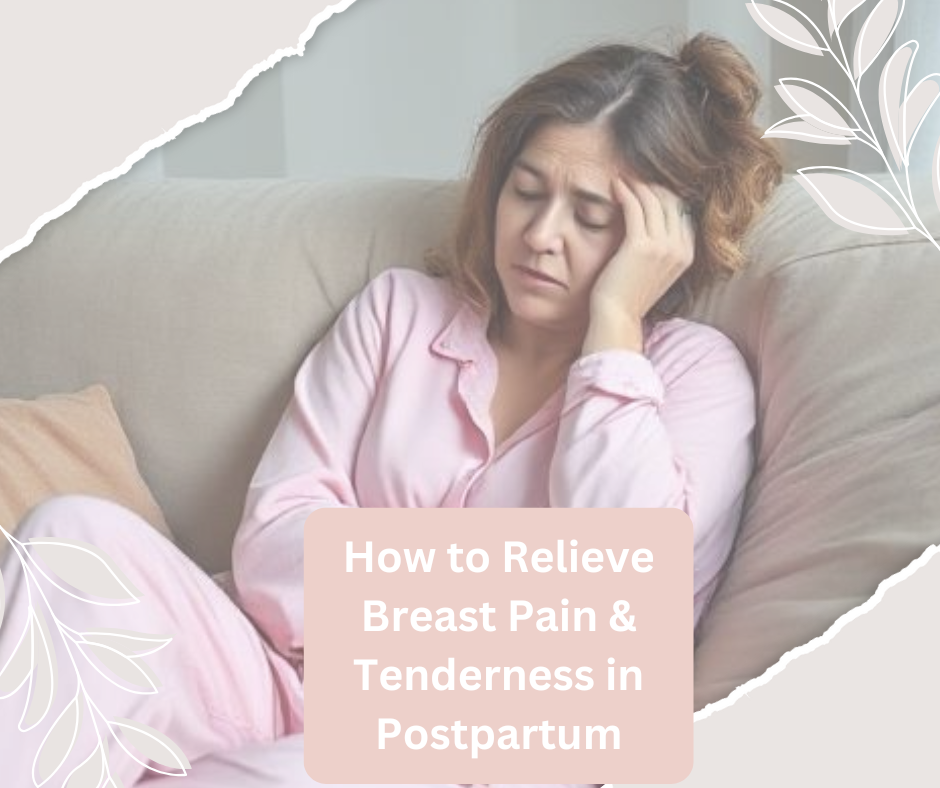
How to Relieve Breast Pain & Tenderness in Postpartum
Share
That aching, throbbing feeling in your breasts after the baby arrives? Yep—totally normal, but that doesn’t mean you have to suffer through it. 🤕 After birth, your breasts are working overtime: milk is coming in, hormones are shifting, and the baby is learning to latch. It’s a lot.
If you're feeling sore, tender, or even engorged, you're not alone—and there are gentle ways to feel better. Let’s break it all down and get you some relief. 🌿💗
🤱 Why Are My Breasts So Sore After Birth?
Postpartum breast pain is super common, especially in the first few weeks. It’s usually caused by:
- Engorgement (when your milk first comes in)
- Poor latch or feeding position
- Clogged ducts or early signs of mastitis
- Hormonal shifts causing tenderness
- Incorrect bra size or lack of support
Knowing why you’re sore can help you treat it more effectively and avoid unnecessary pain.
Tips to Relieve Breast Pain & Tenderness
Here’s what you can do at home to ease that discomfort:
-
Warm compresses before feeding
- Apply a warm cloth or take a warm shower before nursing. This helps stimulate milk flow and relaxes breast tissue.
-
❄️ Cold packs after feeding
- Reduce swelling and inflammation with cool gel packs or chilled cabbage leaves (yes, really!). Use for 10–15 minutes between feeds.
- 💆Gentle breast massage
- Massage gently in a circular motion toward the nipple during and after feeds to help with drainage and reduce pressure.
- 🍼Nurse or pump frequently
- Engorgement worsens when milk stays in the breasts too long. Feed the baby or pump every 2–3 hours.
- 👶 Check the baby’s latch & position
- A shallow latch can lead to nipple pain and poor drainage. Try different breastfeeding positions until you find what’s comfortable for both of you.
-
Wear a supportive, wire-free bra
- A soft, stretchy maternity bra like Bloom & Heal’s gently supports without squeezing sensitive areas. Adjustable and wire-free = postpartum comfort! 🌸
- 💊 Consider pain relief
- If needed, talk to your doctor about using ibuprofen or acetaminophen (both are generally safe while breastfeeding).
🌸 Prevention Tips for the Future
- Avoid tight bras or clothing that press against your breasts.
- Feed the baby before you become overly full.
- Stay hydrated and nourished—your body needs energy to heal and feed.
- Rotate nursing positions to prevent clogging in one area.
🤱 Mama, You’re Not Alone
Breast pain in postpartum can feel overwhelming, especially when you’re already tired and adjusting to new motherhood. But relief is possible💗 With gentle care, supportive products, and a bit of patience, your body will adjust—and things will get easier.
Need a comfy bra that moves with your body and helps reduce pressure? Check out Bloom & Heal’s Maternity Bra — wire-free, soft, and designed with one-hand clips for easy nursing when you’re already juggling everything else. 🙌
FAQs
Q: When does postpartum breast pain go away?
A: Usually within 2–3 weeks, though it varies. Engorgement tends to peak around days 3–5 and improves with regular nursing.
Q: Can I still breastfeed if I’m sore?
A: Yes, and you should! Nursing helps relieve engorgement and keep milk flowing, which actually reduces pain.
Q: When should I call a doctor?
A: If you have fever, chills, sharp pain, or redness on your breast—it may be mastitis and needs medical care.
💖Your comfort matters. Breastfeeding is beautiful, but that doesn’t mean it’s always easy. Treat your body with gentleness, find products that support your journey (like our Bloom & Heal bra 💕), and reach out when you need help.
You’ve got this. 🌸

















































